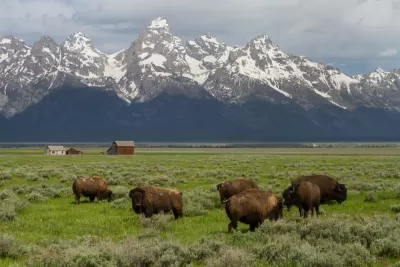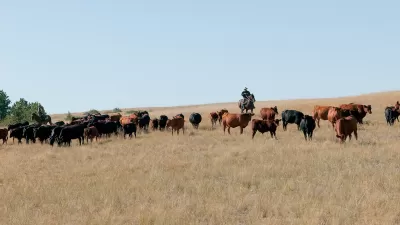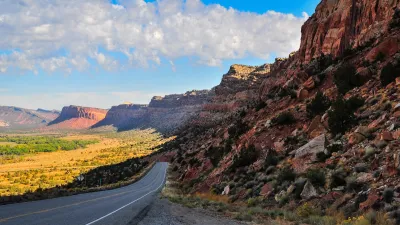After decades of protecting extractive interests, federal law could reverse course and put conservation on par with other uses.

Writing in High Country News, Jonathan Thompson analyzes the potential impact of the Biden administration’s proposed Public Lands Rule, which could “put conservation on a par with other uses of federal lands, such as grazing, oil and gas drilling and mining.” According to Thompson, this could lead to a “seismic shift” for public land management in the United States that would reverse the tendency to privilege development over conservation.
As the rule’s text itself explains, “This proposed rule is designed to ensure … public lands continue to provide minerals, energy, forage, timber, and recreational opportunities, as well as habitat, protected water supplies, and landscapes that resist and recover from drought, wildfire, and other disturbances.”
Thompson briefly describes the history of recent U.S. land management law, starting with the Federal Land Policy and Management Act (FLPMA) of 1976, which “required that public lands be managed for multiple uses and sustained yields rather than to maximize extraction” and prompted the ‘Sagebrush Rebellion’ of the following years and the rollback of conservation measures during the Reagan administration.
“The new rule would codify procedures developed over the last 40 years to provide consistency. But it would also beef up the protective strength of the provision by requiring ‘consideration of ecosystem resilience, landscape-level needs, and rapidly changing landscape conditions’ when designating and managing ACECs,” or Areas of Critical Environmental Concern.
But the rule is far from finalized or approved, and Thompson warns that “If Interior does not move quickly and a less conservation-friendly administration takes control of the White House in 2024, then the new rule could be tossed out relatively easily.”
FULL STORY: A ‘seismic shift’ for public lands?

Alabama: Trump Terminates Settlements for Black Communities Harmed By Raw Sewage
Trump deemed the landmark civil rights agreement “illegal DEI and environmental justice policy.”

Study: Maui’s Plan to Convert Vacation Rentals to Long-Term Housing Could Cause Nearly $1 Billion Economic Loss
The plan would reduce visitor accommodation by 25% resulting in 1,900 jobs lost.

Why Should We Subsidize Public Transportation?
Many public transit agencies face financial stress due to rising costs, declining fare revenue, and declining subsidies. Transit advocates must provide a strong business case for increasing public transit funding.

Wind Energy on the Rise Despite Federal Policy Reversal
The Trump administration is revoking federal support for renewable energy, but demand for new projects continues unabated.

Passengers Flock to Caltrain After Electrification
The new electric trains are running faster and more reliably, leading to strong ridership growth on the Bay Area rail system.

Texas Churches Rally Behind ‘Yes in God’s Back Yard’ Legislation
Religious leaders want the state to reduce zoning regulations to streamline leasing church-owned land to housing developers.
Urban Design for Planners 1: Software Tools
This six-course series explores essential urban design concepts using open source software and equips planners with the tools they need to participate fully in the urban design process.
Planning for Universal Design
Learn the tools for implementing Universal Design in planning regulations.
Caltrans
Smith Gee Studio
Institute for Housing and Urban Development Studies (IHS)
City of Grandview
Harvard GSD Executive Education
Toledo-Lucas County Plan Commissions
Salt Lake City
NYU Wagner Graduate School of Public Service





























